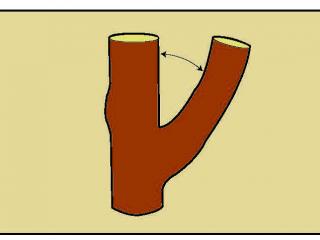Pruning
Central leader — dormant pruning
Dormant or winter pruning aims to maintain the structure of the tree and prevent limb crowding or crossover. It also removes dead, diseased and broken branches and older, less productive wood.
Ensure that no branches are allowed to grow more than one-third the diameter of the central leader as these will threaten its dominance. Remove any such branches. Shorten any whorls that become too long. Maintain the pyramidal shape.
Remove branches with crotch angles of less than 60 degrees. Space smaller fruiting laterals uniformly around the leader and the whorls to prevent crowding as the limbs grow in diameter.
Central leader — summer pruning
Summer pruning is used to remove vigorous upright shoots which are growing in the wrong place and to allow light into the tree. This stimulates the remaining shoots and reduces the amount of pruning that needs to be done in winter.
Vase — dormant pruning
The primary leaders should be maintained and trained outwards. During the first three years head back the leaders to promote continued lateral branching and to stiffen and strengthen them. Head back the leaders to outward growing buds or shoots similar to or greater in angle than those which are removed, to maintain an open centre.
Vase — summer pruning
In summer remove any undesirable shoot growth as soon as it starts. Summer pruning can also be used to direct the leader growth outwards to the desired growing point instead of waiting until winter.

